The Trescott Water Supply Lands have been busy this summer adding new trails to the property with the help of Upper Valley Trails Alliance and Hypertherm Volunteers.
Check out the updated trail map here! 2021 Trescott Trail Map
The Trescott Water Supply Lands have been busy this summer adding new trails to the property with the help of Upper Valley Trails Alliance and Hypertherm Volunteers.
Check out the updated trail map here! 2021 Trescott Trail Map
The Hanover Conservancy is pleased and proud to share with you our new video honoring our 60th anniversary milestone. During 2021, we worked with videographer and Hanover High School student Ezra McGinley-Smith to capture Hanover’s most meaningful conservation places, partners, and progress. Check out our Celebrating 60 years for more info about HC and Ezra
This past Saturday we held our 60th anniversary celebration at the Dartmouth Rivercrest field across from our office at 71 Lyme Rd in Hanover. 76 people came out to help celebrate 60 years of community conservation with Hanover Conservancy and we had a chance to hear stories from fellow community members. It was very heartwarming to be able to capture a photo with past and present board members from 1961 till now. We also had the opportunity to recognized our key partners.
Special Thanks to
Dartmouth College
Lars Blackmore- Ameridane Press
Lyme Road Dental, Neal Wallace Dental
Sheridan Printing
Red Clover
Hanover Parks & Recreation
Those Guys of Lyme
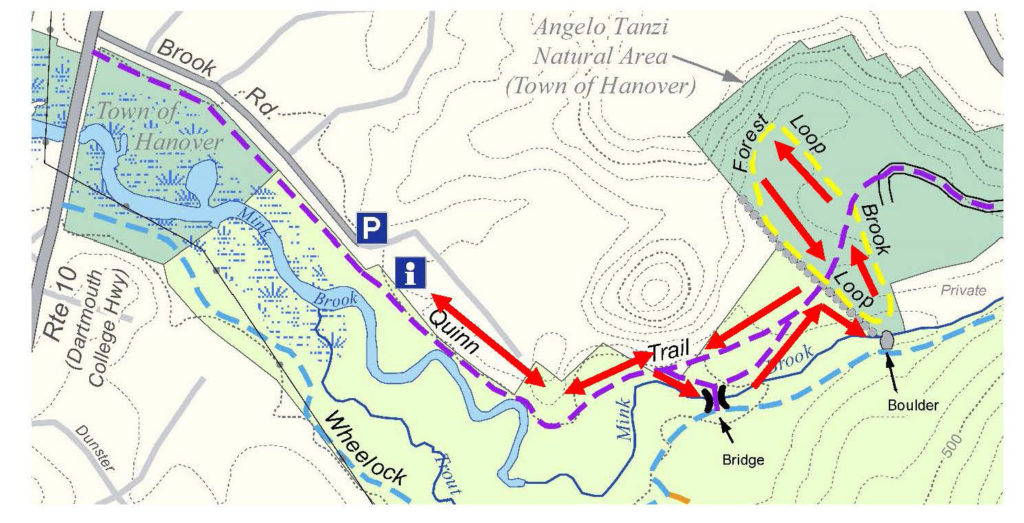 DOWNLOAD FULL PDF OF DIRECTIONS – Mink Brook & Tanzi Tract
DOWNLOAD FULL PDF OF DIRECTIONS – Mink Brook & Tanzi Tract
Driving directions:
What you should know:
BRIEF HIKING DIRECTIONS
FULL DIRECTIONS
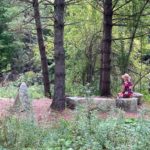 Turn R to continue on the Quinn Trail; you’ll soon arrive at the Norman Overlook at R, marked by slabs of granite offering a pleasant perch for observing the brook. Bob Norman, a founder of the Hanover Conservancy in 1961, was its President in 1999 when the Preserve was protected. A demonstration planting of native shrubs includes red osier (Cornus sericea), whose brilliant red stems are especially ornamental in late winter. This handsome shrub is a great choice for wet areas, as it tolerates wet feet and its white berries offer high quality food for wildlife in fall. You may see it growing naturally nearby.
Turn R to continue on the Quinn Trail; you’ll soon arrive at the Norman Overlook at R, marked by slabs of granite offering a pleasant perch for observing the brook. Bob Norman, a founder of the Hanover Conservancy in 1961, was its President in 1999 when the Preserve was protected. A demonstration planting of native shrubs includes red osier (Cornus sericea), whose brilliant red stems are especially ornamental in late winter. This handsome shrub is a great choice for wet areas, as it tolerates wet feet and its white berries offer high quality food for wildlife in fall. You may see it growing naturally nearby.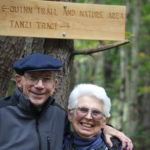 Note the plaque at R honoring the Quinn Family, who helped protect this land in 1999. Both Brian and Allie Quinn were members of the Conservancy’s board of directors, with Allie leading environmental education efforts in Hanover schools in the 1970s and 80s.
Note the plaque at R honoring the Quinn Family, who helped protect this land in 1999. Both Brian and Allie Quinn were members of the Conservancy’s board of directors, with Allie leading environmental education efforts in Hanover schools in the 1970s and 80s.
September 2021
This Hanover Hike of the Month is generously sponsored by
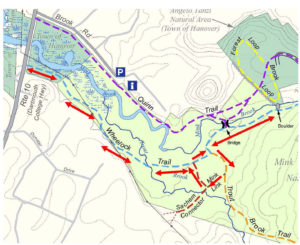 DOWNLOAD FULL PDF-Mink Brook South Side Storied Stones
DOWNLOAD FULL PDF-Mink Brook South Side Storied Stones
Driving directions:
What you should know:
BRIEF HIKING DIRECTIONS
FULL DIRECTIONS
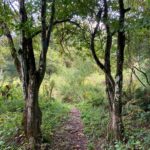 The trail enters the woods and 5 minutes from the road, passes through a natural gate of two impressively large (for them) musclewood trees (R). A look at their limbs hints at the reason for this odd name – they look like they’ve been to the gym!
The trail enters the woods and 5 minutes from the road, passes through a natural gate of two impressively large (for them) musclewood trees (R). A look at their limbs hints at the reason for this odd name – they look like they’ve been to the gym!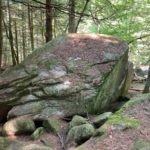 The most massive stone of all rears up at L. Follow the trail up a few yards to a nearby lookout above a small waterfall on Mink Brook. You have reached your destination.
The most massive stone of all rears up at L. Follow the trail up a few yards to a nearby lookout above a small waterfall on Mink Brook. You have reached your destination.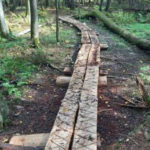
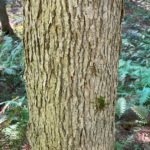 3 minutes later, cross Trout Brook again. Just a few yards beyond, note two large “basket ash” trees, one on either side of the trail. These are a species of ash with pale, finely flaked bark that are favored for the making of baskets by Native American craftspeople.
3 minutes later, cross Trout Brook again. Just a few yards beyond, note two large “basket ash” trees, one on either side of the trail. These are a species of ash with pale, finely flaked bark that are favored for the making of baskets by Native American craftspeople.Note: The Hanover Conservancy seeks volunteers to monitor trails and help out with occasional work parties. We also warmly welcome donations to our Mink Brook Stewardship Fund to help maintain the Preserve. Get in touch at info@hanoverconservancy.org. For more about the Mink Brook Nature Preserve, visit www.hanoverconservancy.org/lands/mink-brook/.
This Hanover Hike of the Month is generously sponsored by Snyder Donegan Real Estate Group
September, 2021
We are thrilled to announce that the 250-acre Mink Brook Community Forest (formerly owned by the Leavitt family) off Greensboro Road is now permanently protected and open to the public! An entire generation of conservationists worked to make this project happen: read the full press release here.
This couldn’t have happened without The Town of Hanover and the Trust for Public Lands working in tandem with generous local donors- thank you all! The Mink Brook Community Forest belongs to the Town of Hanover and will be managed for sustainable forestry, low-impact recreation and biodiversity.
The land is now open to the public. Keep an eye out for guided hikes to the property, to be announced soon!